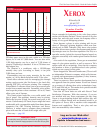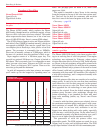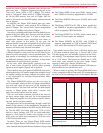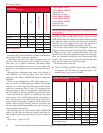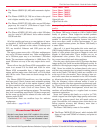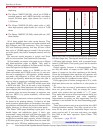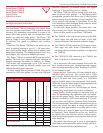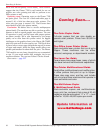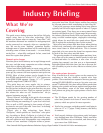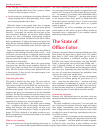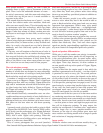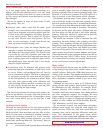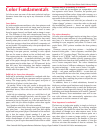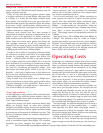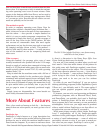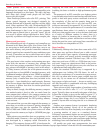
The Color Laser Printer Guide: Industry Briefing
Entire Contents © 2006 Progressive Business Publications. Copying of Pages Prohibited.To Order: 800 247 2185 or www.betterbuys.com 57
What We’re
Covering
This guide covers desktop printers that deliver full-color
output using laser or laser-class technology. (We’ll
explain in a minute what we mean by “laser-class.”) All
the machines discussed are suitable for workgroups and
can be connected to a network, often as a standard fea-
ture. We use the term “desktop” somewhat flexibly:
although most of these machines will fit comfortably on
a desktop
, some of them sit on stands — or even directly
on the floor — when fully configured. In fact, some look
more like copiers than printers.
Drama
tic price c
hanges
Note that prices in this industry are in rapid change mode
this year, and that many companies are either reducing
prices f
ast or offering big r
ebates.
Prices have fallen significantly in recent years, and you
can now get a color laser printer for as little as $299 (a few
year
s ago, by contrast, the least expensive street price was
$2,999). Most of these printers can be bought for less
than $2,000, and the bulk of the 8 1/2" x 14" printers are
in the $500–$2,000 segment.
(Larger, 11" x 17" printers
generally range from $3,000 to $7,000.)
This guide does not cover regular ink jet printers,
though w
e should point out tha
t the perf
ormance of a
few ink jets has increased to the point that they can pose
a via
b
le alternative to laser. There’s a separate section in
this volume for what we call “business-class” ink jet
printers, beginning on page 125.
W
e ar
e
,
however, including in this guide a less common
tec
hnolo
gy known as “solid ink jet” because it is widely
viewed as being on something of a peer level with laser.
This, as well as LED printing (a close cousin of laser),
accounts for our use of the term “laser-class” in defining
the parameters of this guide.
T
here’s also a new technology from Ricoh,
“GelSprint,” which qualifies as “laser-class” color print-
ing
.
Accor
ding to Ricoh,
GelSprint is a h
ybrid of
laser
and ink jet print technologies that offers laser-like preci-
sion and resolution with consumables costs comparable
to those of
laser mac
hines. GelSprint utilizes a perma-
nent print head that, Ricoh claims, enables fast printing
by low-cost printers while contributing to their long life.
Until a few years ago, most desktop color laser printers
typically had full-color engine speeds of about 3–5 pages
per minute (ppm). Then there was a move toward faster
models with speeds in the 6–12ppm range. Most recently,
the industry has been flooded with even speedier models
using so-called tandem-engine, single-pass technology,
which allows for rated full-color speeds above 20ppm.
(We’ll explain this technology later in this section.)
Most color laser printers have been faster when printing
in black only: commonly, color printers have run three or
more times faster in black-and-white. This is because
pages had to be run across the drum four separate times
as eac
h of the four colors was laid down.
The growing number of tandem-engine machines, how-
ever, often run at the same or similar speeds in color and
in black-and-white. In addition, a new class of color
printing has emerged, one that acts as a departmental,
high-speed black-and-white laser, but has as an extra fea-
ture: the ability to print in color, albeit at a relatively slow
speed.
The copier-printer alternative
Keep in mind that all color copiers can be connected to
computer
s so that they double as upscale color laser
printers. These machines are expensive devices, generally
costing $12,000–$40,000 or mor
e at list price once con-
nected. Traditionally, they have offered faster speeds than
desktop color printers and more sophisticated paper han-
dling
.
Ne
vertheless, some of the latest single-function
laser printer
s ar
e giving the copier-printers a run for their
money:
✔ The 20–40ppm speeds for the growing number of
color laser printer
s ri
v
al those of
most color copier
-
printers, which are quite a bit more expensive.
✔ Until a f
ew years ago, no desktop model could print in
color on 11" x 17" pa
per
. Today, however, this ability
is common.
✔ Until recently, desktop color printers rarely had paper
tr
a
ys holding mor
e than 250 sheets
.
T
oda
y
,
most have
at least 500-sheet trays as standard, and some can go
up to more than 3,000 sheets.
Industry Briefing



